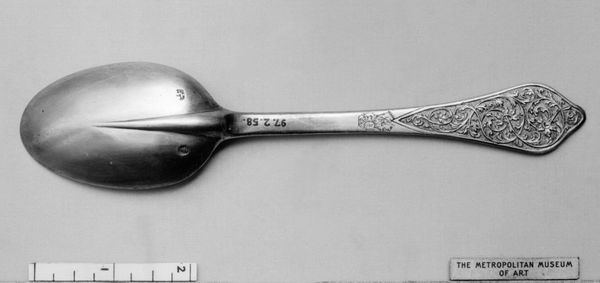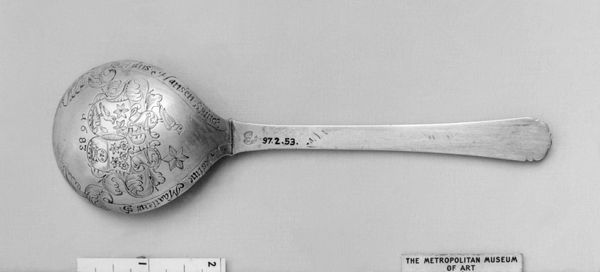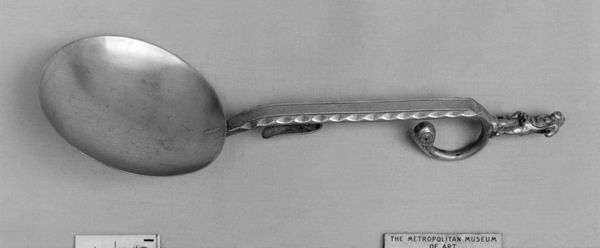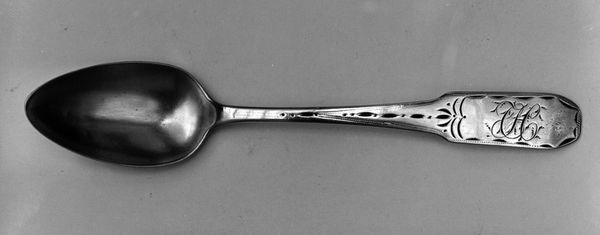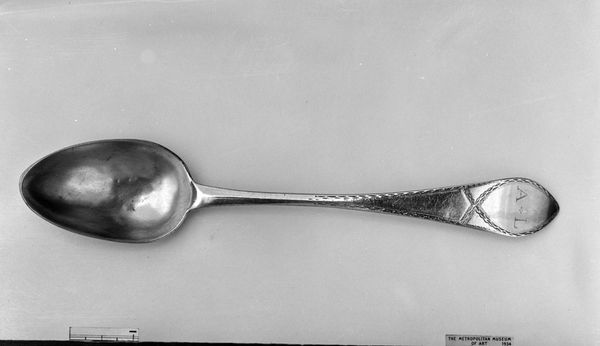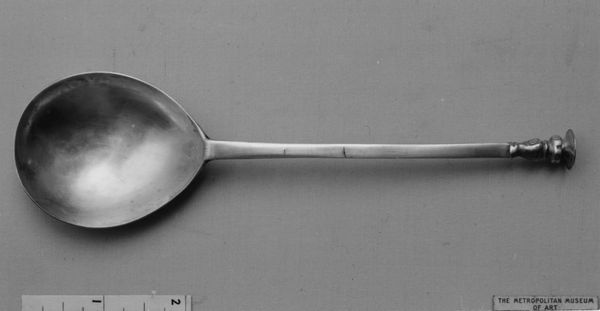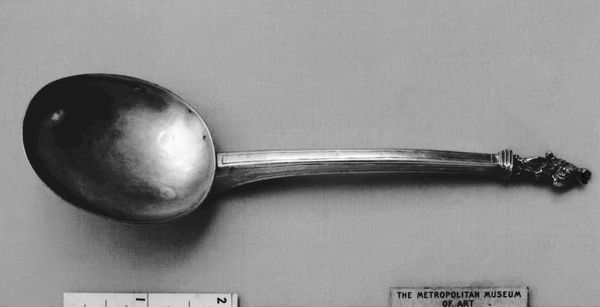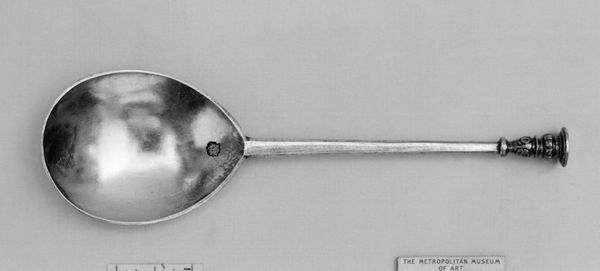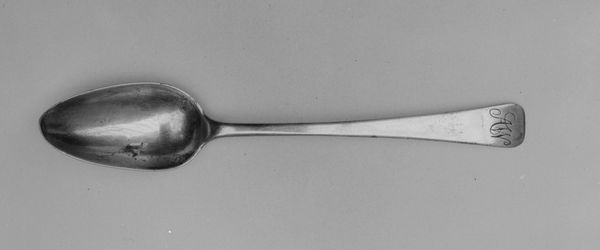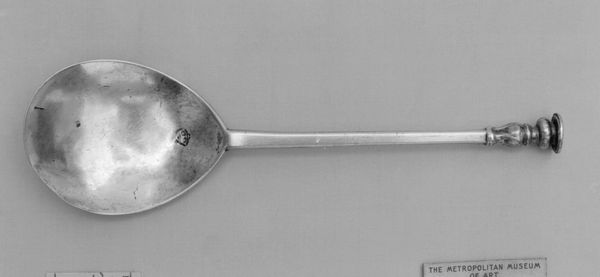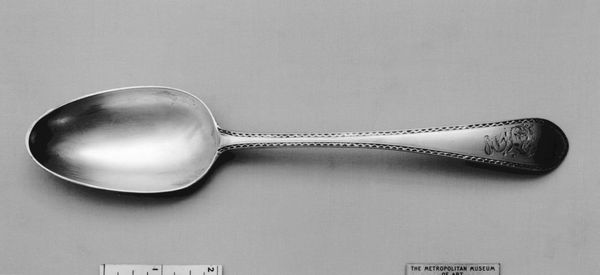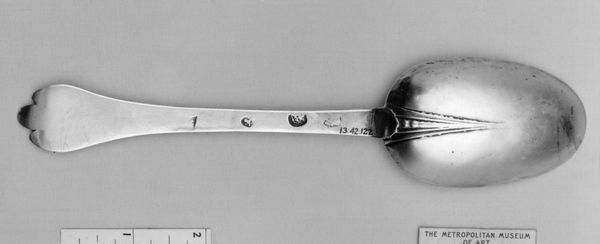
silver, metal, sculpture
#
medieval
#
silver
#
metal
#
sculpture
#
sculpture
#
decorative-art
Dimensions: Length: 7 3/8 in. (18.7 cm)
Copyright: Public Domain
This silver spoon was made by Thomas Spackman, a London silversmith who died in 1713. The spoon’s existence and preservation in a museum collection speaks to the importance of dining and domestic rituals in eighteenth-century England, and to the role of silver as a marker of status. Spackman’s spoon displays hallmarks and maker's marks of the period. These details offer a glimpse into the highly regulated system of silver production, in which the Goldsmiths' Company played a central role. This was a powerful London trade guild which had the right to test the quality of silver and to tax it. The spoon tells us about the social hierarchies of early modern England where dining habits and material possessions were visible signs of social class and professional status. To understand this spoon better, one might research the history of the Goldsmiths' Company, inventories of eighteenth-century households, and studies of dining etiquette. Each of these can help us better understand the social context and the cultural values that gave objects like this their meaning.
Comments
No comments
Be the first to comment and join the conversation on the ultimate creative platform.
